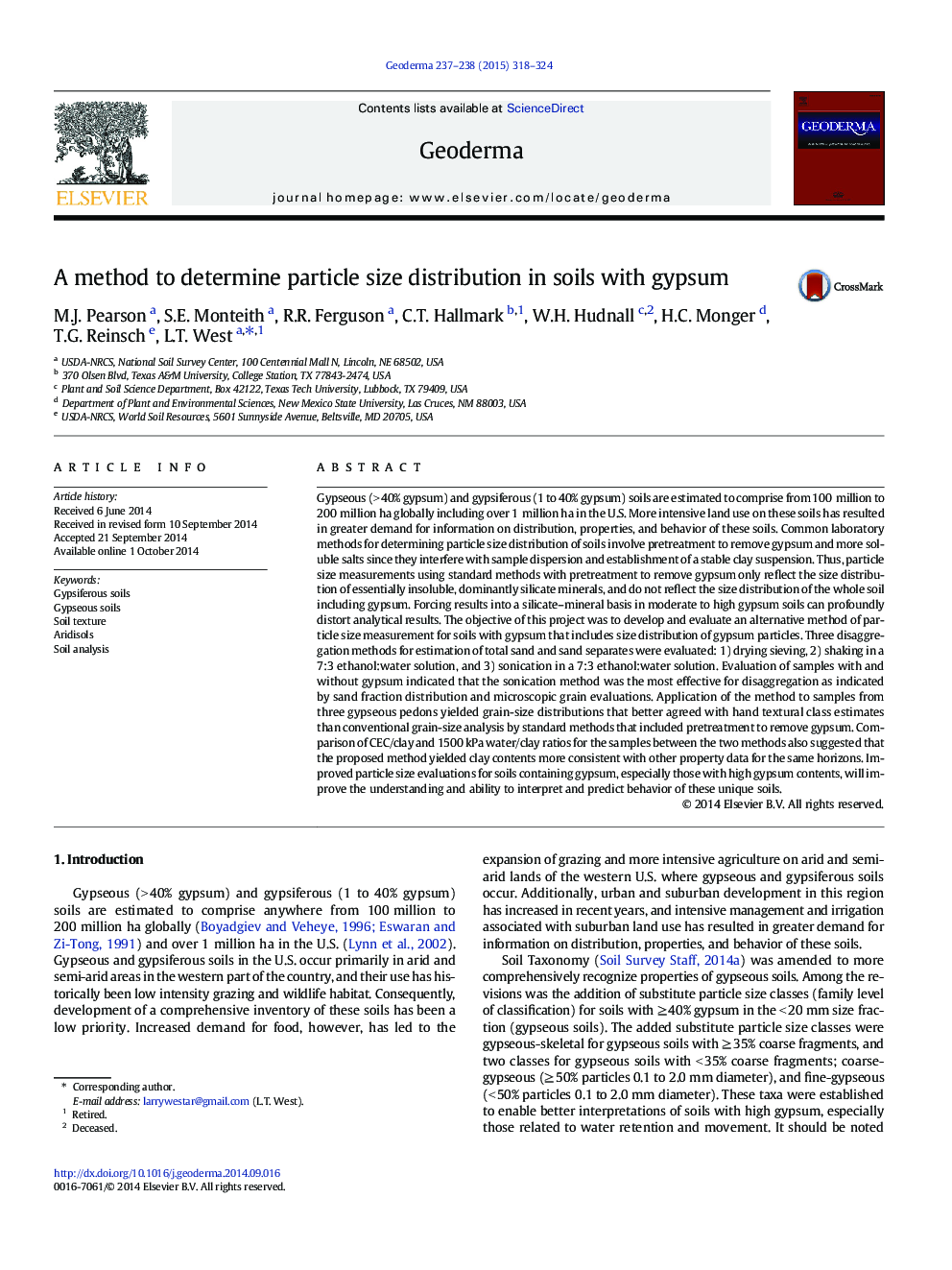| کد مقاله | کد نشریه | سال انتشار | مقاله انگلیسی | نسخه تمام متن |
|---|---|---|---|---|
| 4573295 | 1629467 | 2015 | 7 صفحه PDF | دانلود رایگان |
• A method is proposed for particle size analysis (PSA) of soils containing gypsum
• Method consists of standard PSA on non-gypsum separate, sand measurements of whole soil with gypsum, and recalculation of clay
• Particle disaggregation by sonication in water:ethanol solution was effective without gypsum grain breakage
• Property ratios to clay derived with clay percentage from the proposed method were more appropriate than standard method ratios
• Results of proposed method agreed well with sample texture evaluated by feel
Gypseous (> 40% gypsum) and gypsiferous (1 to 40% gypsum) soils are estimated to comprise from 100 million to 200 million ha globally including over 1 million ha in the U.S. More intensive land use on these soils has resulted in greater demand for information on distribution, properties, and behavior of these soils. Common laboratory methods for determining particle size distribution of soils involve pretreatment to remove gypsum and more soluble salts since they interfere with sample dispersion and establishment of a stable clay suspension. Thus, particle size measurements using standard methods with pretreatment to remove gypsum only reflect the size distribution of essentially insoluble, dominantly silicate minerals, and do not reflect the size distribution of the whole soil including gypsum. Forcing results into a silicate–mineral basis in moderate to high gypsum soils can profoundly distort analytical results. The objective of this project was to develop and evaluate an alternative method of particle size measurement for soils with gypsum that includes size distribution of gypsum particles. Three disaggregation methods for estimation of total sand and sand separates were evaluated: 1) drying sieving, 2) shaking in a 7:3 ethanol:water solution, and 3) sonication in a 7:3 ethanol:water solution. Evaluation of samples with and without gypsum indicated that the sonication method was the most effective for disaggregation as indicated by sand fraction distribution and microscopic grain evaluations. Application of the method to samples from three gypseous pedons yielded grain-size distributions that better agreed with hand textural class estimates than conventional grain-size analysis by standard methods that included pretreatment to remove gypsum. Comparison of CEC/clay and 1500 kPa water/clay ratios for the samples between the two methods also suggested that the proposed method yielded clay contents more consistent with other property data for the same horizons. Improved particle size evaluations for soils containing gypsum, especially those with high gypsum contents, will improve the understanding and ability to interpret and predict behavior of these unique soils.
Journal: Geoderma - Volumes 237–238, January 2015, Pages 318–324
